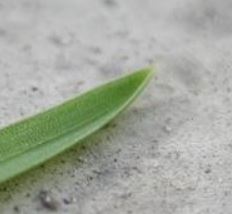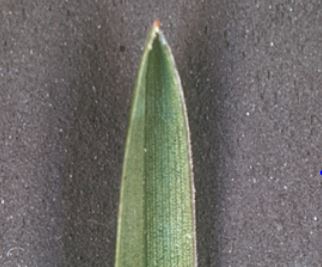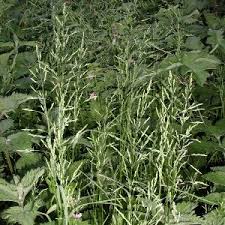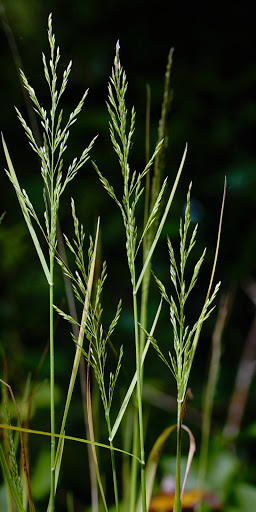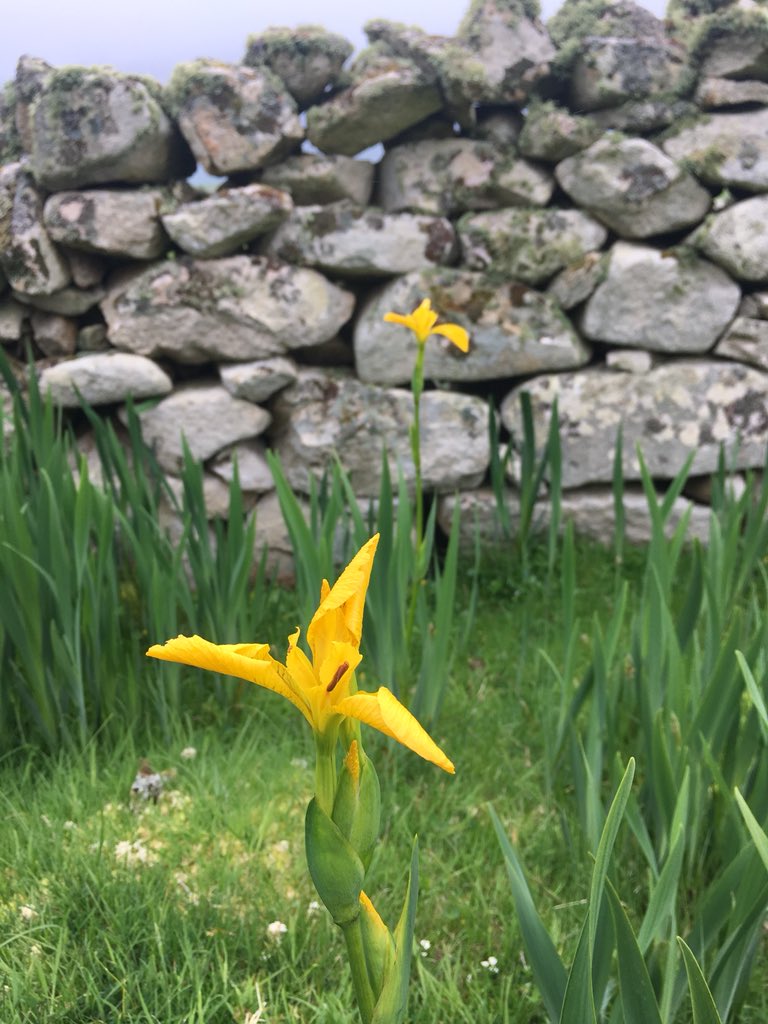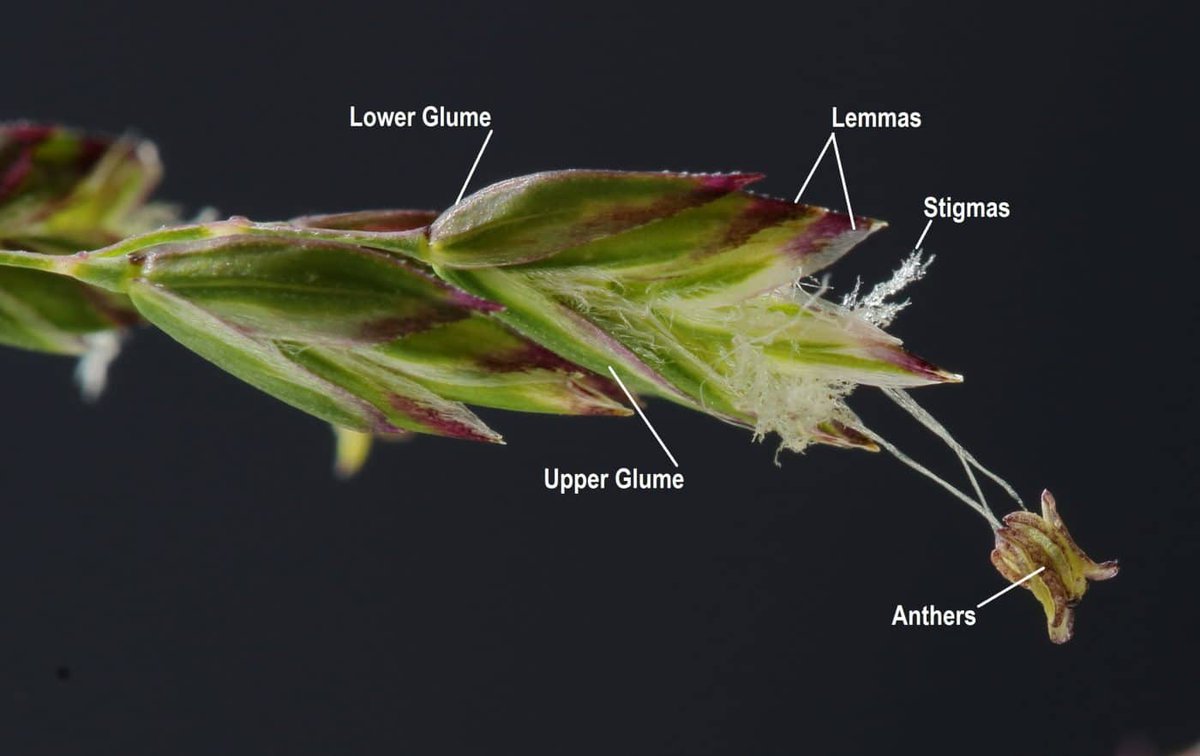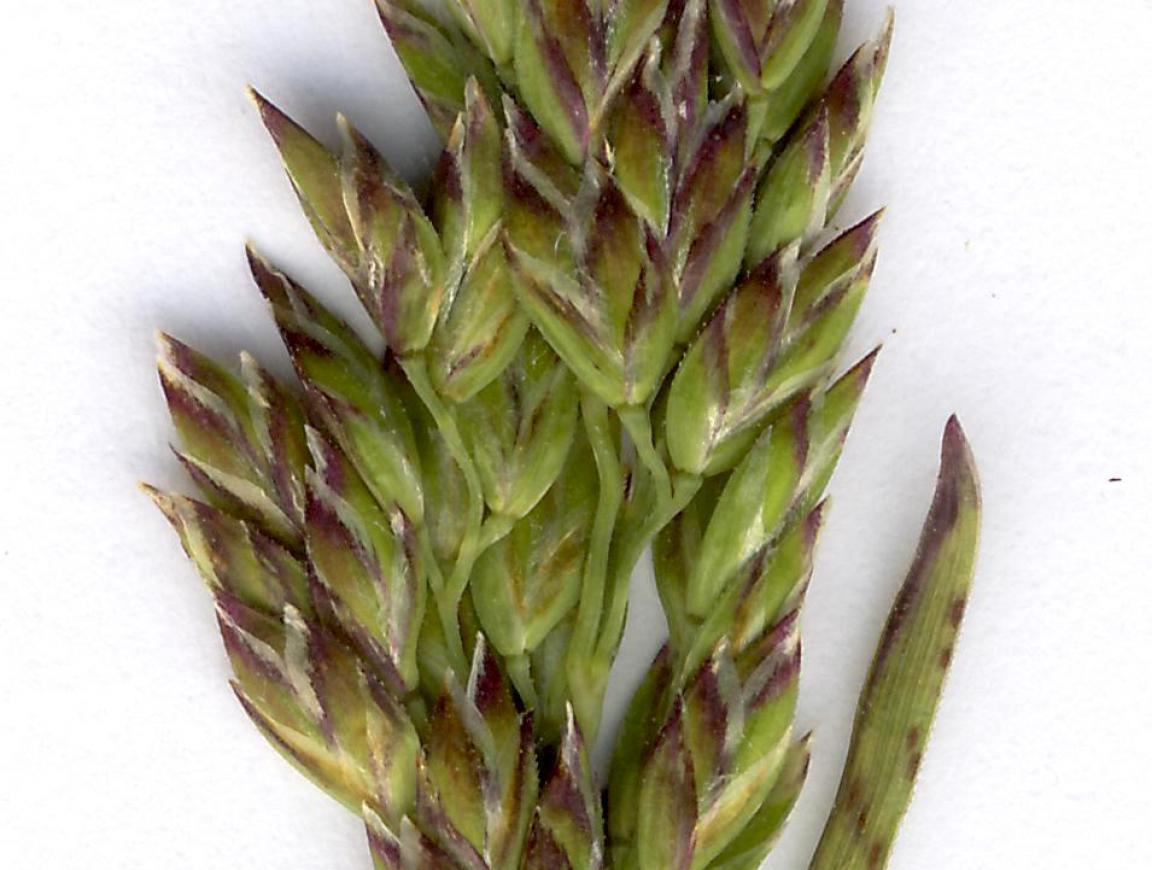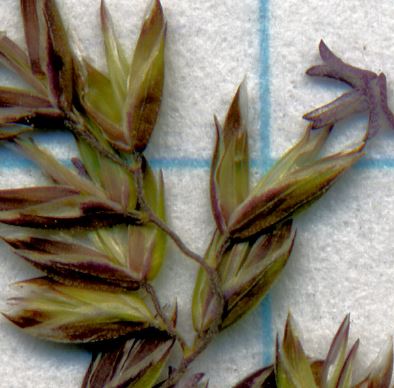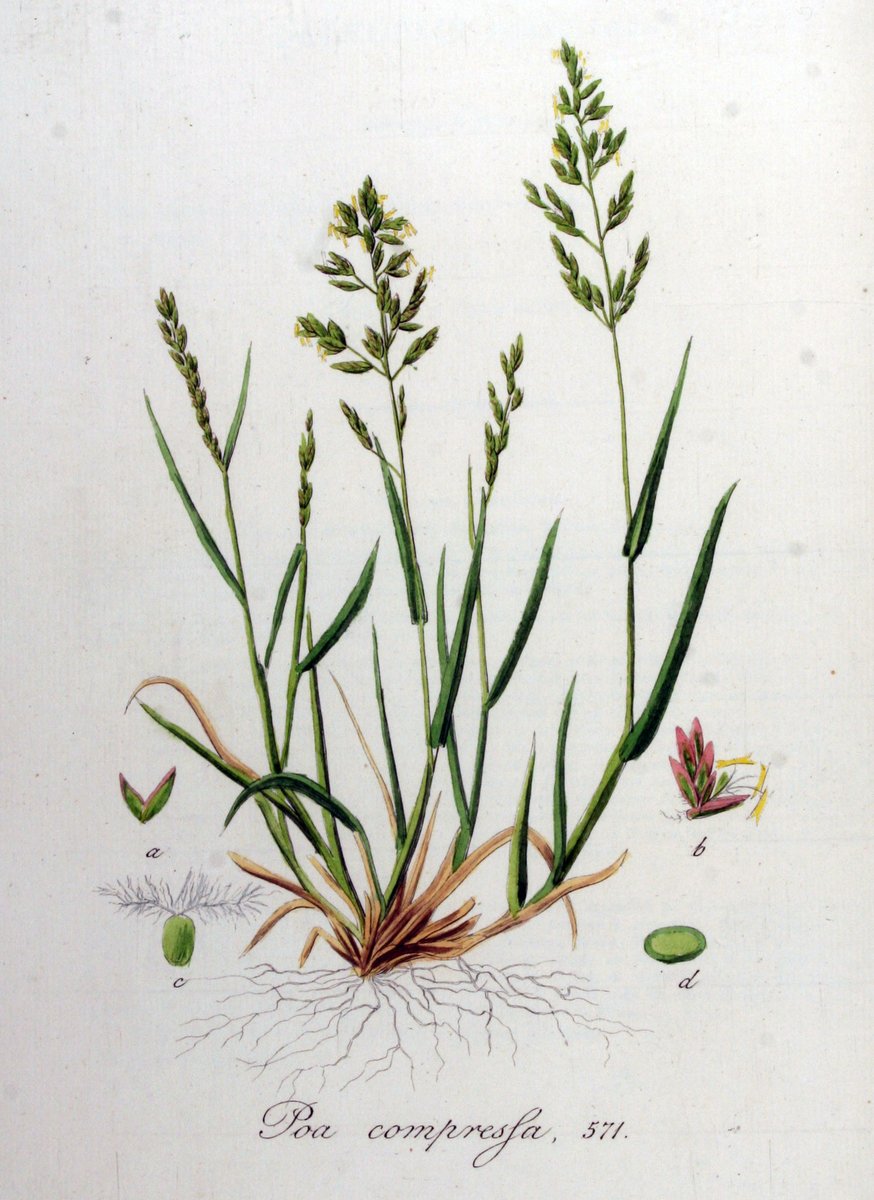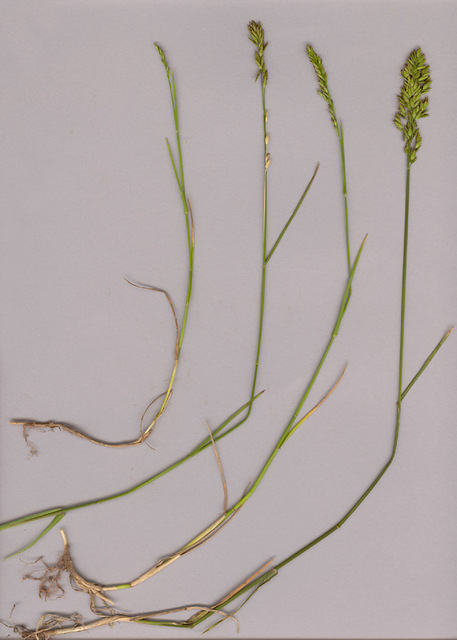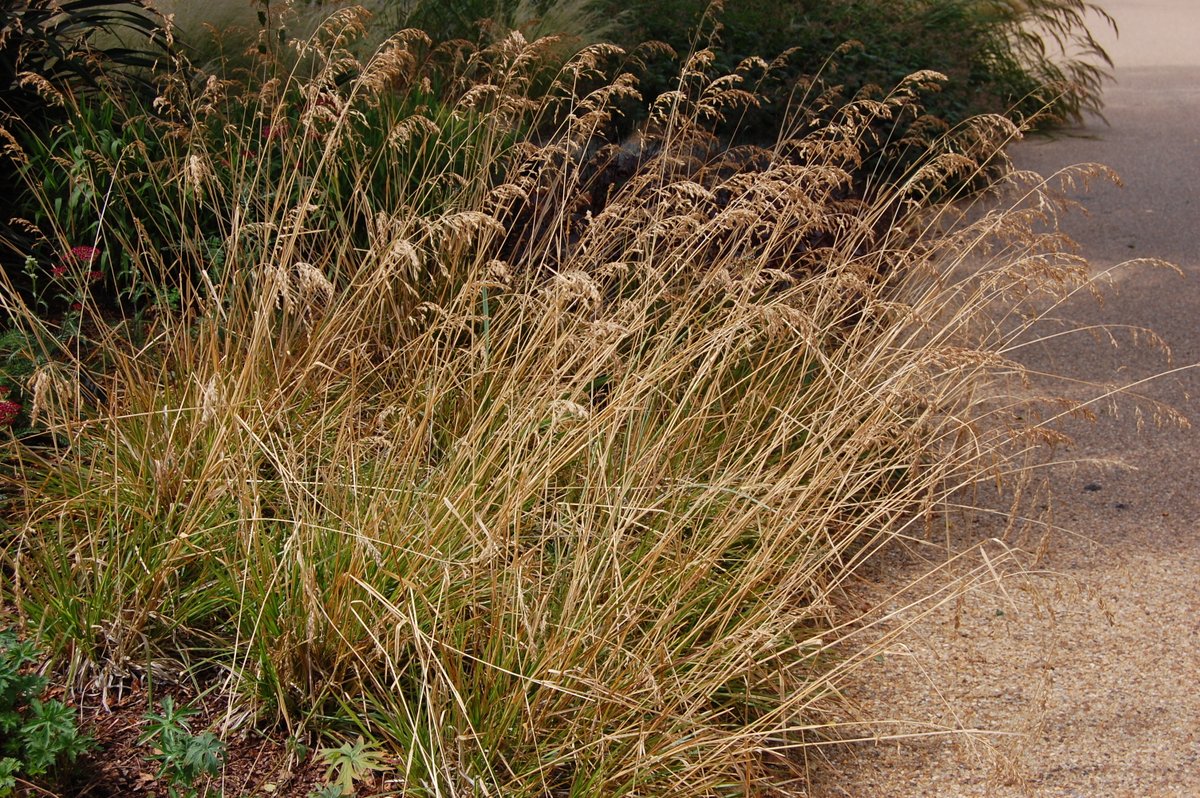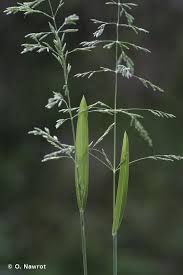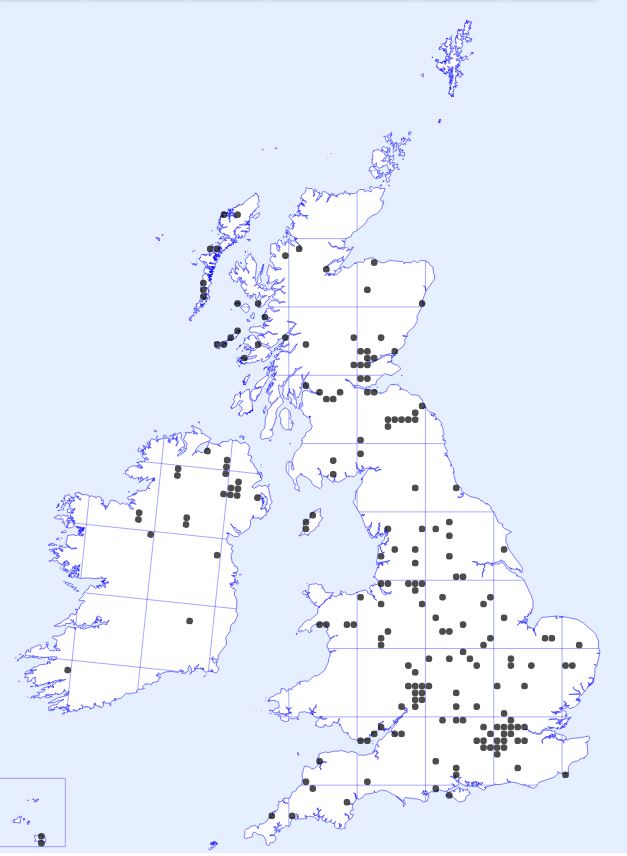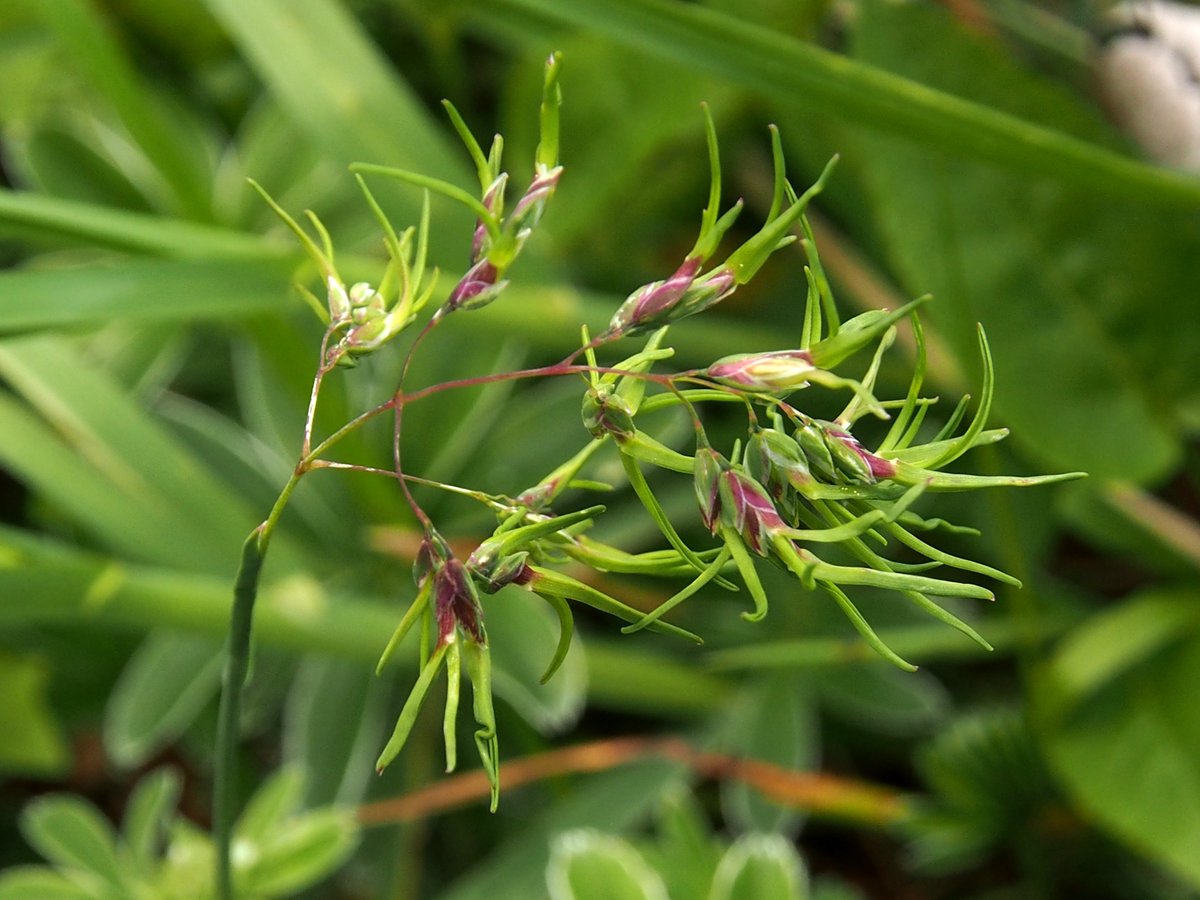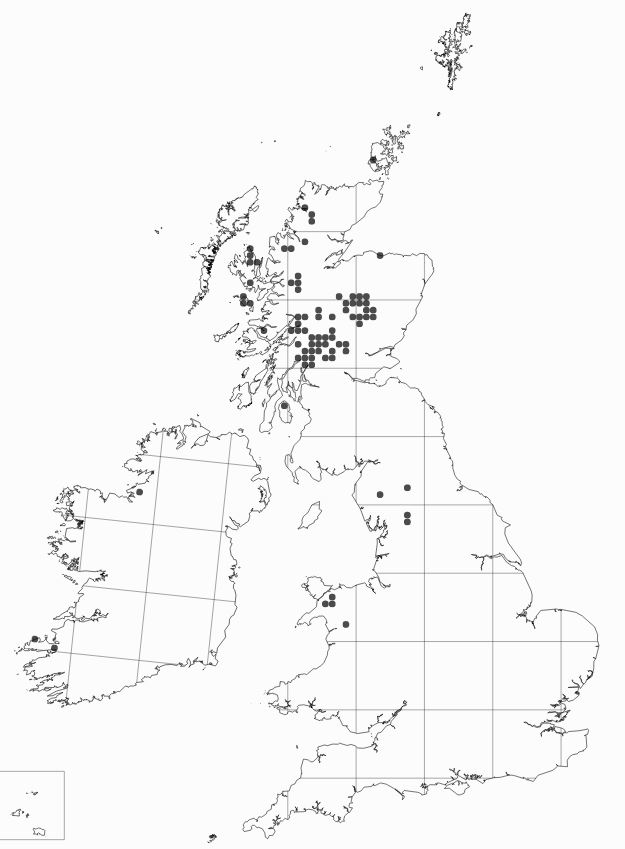This is an ideal time to learn about the grass genus Poa (Poaceae). These are the species with leaf-tips shaped like the bow of a canoe (x10).
The 2 common species in woodland are really easy to tell apart. Just touch the top of the stem between finger and thumb and you’ll know straight away. Poa trivialis (left) is distinctly rough to the touch. Poa nemoralis (right) is smooth.
As a clincher, look at the ligule (x10): it is huge in P. trivialis (4-10mm, left) but very modest in P. nemoralis (less than 0.6mm), right. The leaves are droopy in P. trivialis, but straight and stiff in P. nemoralis (Heil Hitler grass).
There are several tricky grassland species of Poa, but one of them is really easy: P. angustifolia (the specific name means ‘narrow-leaved’) looks more like a Festuca with its clumps of very narrow, glossy leaves (< 2mm wide). The others have much broader leaves (2-4mm or more).
You will also see Poa trivialis (above) in grassland as well as woodland, especially damp grassland, where it grows commonly amongst Iris and Juncus, but the same stem-roughness test will identify it straight away.
There two commonest grassland Poa species are separated on their lower and upper glumes (x10). You need to count the veins in each glume, decide whether the glumes are roughly the same length, and describe the tip (is it acute or acuminate?).
When a glume has 3 veins, you can see a vein clearly in sideways view. David Haines’ beautiful close-up of Poa humilis spikelets shows its equal glumes with their 3 veins and acuminate tips.
Poa humilis (left) has both glumes roughly the same length, both with 3 veins (not 1 on the lower glume), and acuminate tips. Poa pratensis (right) has unequal glumes with acute tips. The smaller, lower glume has no vein visible on its side, which means it has 1 (not 3) veins
One of the most frequently mis-identified Poa species is P. compressa. It should be really easy, because it is the only one with a strongly flattened flower stem. Other species have somewhat compressed stems, and this can lead the unwary into jumping to the wrong conclusion.
The clincher is that P. compressa has lots of nodes (4-6 up to 9) while the others have fewer (2-4). Sod’s Law says your specimen will have 4 nodes. If so, look for lack of straightness: P. compressa is slightly bent at each node.
Of the less common species of Poa, the most spectacular is P. chaixii which used to be planted as an ornamental in estate woodlands. It is the only one with leaves more than 6mm wide. Also, the uppermost culm leaf is much shorter than its sheath.
The alien Poa palustris used to be grown as a fodder grass, and is occasionally found in marshes, ditches, fens and damp grassland. It is a big grass (up to 150cm tall with a ligule 2-4mm) with a delicate panicle of tiny spikelets, and 4-6 branches at the lowest panicle node.

 Read on Twitter
Read on Twitter